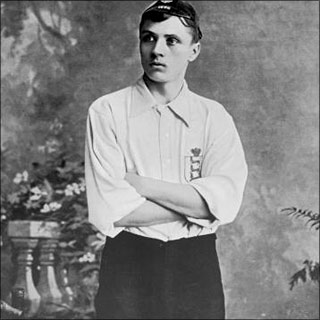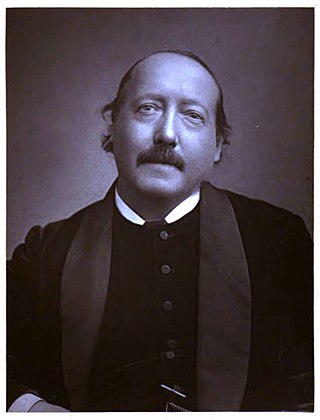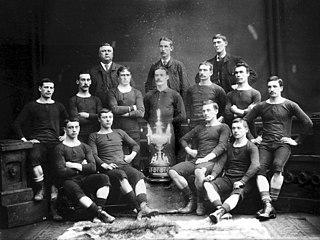
The Girl's Realm was a sixpenny monthly magazine [1] : 127 , published by Hutchinson that ran for seventeen volumes from November 1898 to November 1915. [2] [note 1]

The Girl's Realm was a sixpenny monthly magazine [1] : 127 , published by Hutchinson that ran for seventeen volumes from November 1898 to November 1915. [2] [note 1]
In August 1898 it was announced that Hutchinson was to launch a magazine for young gentlewomen which would "reflect everything of interest to girlhood" and be up-to-date, bright, amusing, interesting and instructive. [4] The new magazine was intended to be a companion to The Lady's Realm , [5] : 166 also owned by Hutchinson, which had been launched in 1896. [3] : 166
The first issue of The Girl's Realm was published in November 1898 with the Irish journalist and children's author Alice Corkran as both a contributor and editor. [6] [7] The first edition had 140 illustrations and 25 articles printed on art paper and was well reviewed. [8] [9] The Daily News of 26 October 1898 stated the issue [6]
Other reviewers were similarly positive:
The first edition offered "many valuable prizes" including two Swift bicycles (worth £50 the pair) a Singer Sewing machine (worth £16) and other prizes. [12] One of the competitions was for the translation into English, from French, of a story by Madame Darmesteter. [10]
Corkran was the editor for three years, resigning in early 1902 but remained involved with the magazine as a contributor and as the founder and guiding spirit of the Guild of Service and Good Fellowship. [13] [14] [15] Another source credits her as the editor until 1915, [16]
The magazine ceased to be an independent publication in 1915. Several other women's journals closed at the same time including The Lady's Realm (November 1896 –October 1914), the 'parent' of Girl's Realm, Hearth and Home (1891–1914), and Young Woman (1892–1915). [17] The Girl's Realm was bought in 1915 and combined with Woman at Home to become Woman at Home and Girl's Realm, and in 1917 it was jointly owned by George Newnes and Hodder and Stoughton. [18] The reason for the merger was the paper shortage in World War I. [19] Given the focus of the magazine on modern girlhood outside the home, it must have been a difficult fit with Woman at Home.[ citation needed ]
The Girl's realm differed from earlier magazines that targeted middle-class girls. It was self consciously modern and promoted education, modern pastimes such as photography and physical activity for girls. It encouraged girls to do things beyond the domestic sphere with regular features on girl's schools, sport, and modern hobbies. [1] : 278–279 The magazine established itself as a thoroughly modern publication from its inception. [5] : 165
In A Chat with the Girl of the Period in Volume 1 of the magazine [note 2] Alice Corcoran defined here audience when she wrote to her readers that the modern girl is tired of being taken to see her brother play football, she wants to kick at it herself ... is tired of living in a doll's house ... will never take a back seat ... claims that she has as much right to a good education as her brothers ...wants to lead a professional life. [20] : 85
Class was always an underlying issue. The Bristol Mercury complained of the first issue that it was absurd for one writer to talk of a girl of 17 being given a dress allowance of £100 as this would not be typical of the intended readership. [11]
On the third anniversary of the magazine Corkran launched a competition for which the first prize was a Swift bicycle (worth £22). Readers had to cut out a coupon and send it in with their vote for whichever of 14 women they considered to be their favourite character. When the magazine got their vote, they sent out a further 25 coupons so the reader could canvass for more votes among other girls that they knew: the object of the competition was to introduce the magazine to as many potential readers as possible. [1] : 284 All girls who submitted 25 votes got a small silver charm. The winner of the competition, A. Mary Field, of Highgate, had collected 3,242 votes, through working via a network of headmistresses of girls' schools. The magazine was so pleased with the success of the competition they added another 19 consolation prizes to the 34 prizes initially advertised, so every girl who collected over 400 votes would be rewarded. [1] : 284–285
In all, 2,876 girls participated in the competition and between them they submitted over 300,000 votes. The 14 characters covered a broad range of endeavours.
| Character | No of Girls | as % | No. Votes | as % | |
|---|---|---|---|---|---|
| 1 | Florence Nightingale. the founder of modern nursing. | 1,180 | 41.03% | 120,776 | 40.17% |
| 2 | Grace Darling. the lighthouse keepers daughter who rowed out with her father to rescue people from shipwreck. | 651 | 22.64% | 67,609 | 22.49% |
| 3 | Joan of Arc. the Maid of Orléans, a French hero of the Hundred Years' War | 576 | 20.03% | 62,803 | 20.89% |
| 4 | Flora MacDonald. who helped Bonnie Prince Charlie evade capture after the Battle of Culloden. | 122 | 4.24% | 11,947 | 3.97% |
| 5 | Elizabeth Fry. the Quaker and prison reformer. | 81 | 2.82% | 7,504 | 2.50% |
| 6 | Alice Ayres. a nursemaid who died after rescuing her charges from a fire. | 49 | 1.70% | 5,103 | 1.70% |
| 7 | Frances Mary Buss. a pioneer of women's education | 38 | 1.32% | 6,142 | 2.04% |
| 8 | Lady Hallé. a virtuoso violinist, chamber musician, and teacher. | 34 | 1.18% | 4,064 | 1.35% |
| 9 | Harriet Beecher Stowe. the American abolitionist and author of Uncle Tom's Cabin. | 33 | 1.15% | 3,941 | 1.31% |
| 10 | Rosa Bonheur. a French artist, widely consider to be the most famous female painter of the 19th century | 32 | 1.11% | 3,082 | 1.03% |
| 11 | Jenny Lind. a popular Swedish opera singer. | 28 | 0.97% | 2,948 | 0.98% |
| 12 | Mrs Siddons. the Welsh-born English actress, the best-known tragedienne of the 18th century. | 21 | 0.73% | 1,876 | 0.62% |
| 13 | Elizabeth Barrett Browning. an English poet who married the poet and playwright Robert Browning. | 19 | 0.66% | 1,768 | 0.59% |
| 14 | Baroness Burdett-Coutts. one of the wealthiest women in England who spent most of her wealth on philanthropy. | 12 | 0.42% | 1,098 | 0.37% |
| 15 | Total | 2,876 | 300,661 |
One of the innovations of the magazine was the magazine's Guild of Service and Good Fellowship. The guild was founded in April 1900 by Alice Corkran and charged a nominal subscription to members. The guild supported a cot at the Ormond Street Hospital for Sick Children, and also provided a scholarship to the Royal College of Music. Other activities included providing Christmas treats, one in Bethnal Green for 117 children and one in Kensal Green for 360 children, with the Guild members themselves providing the presents. [21] The guild had over 2,300 members by 1905. [22]
Fund-raising events included tableaux vivant at Covent Garden in 1909, opened by the Duchess of Connaught and featuring Royal personages in the tableaux. [23] In 1911 the Guild was fundraising for the King Edward Memorial Cottage where girl workers of gentle birth and limited means could take a holiday, either as invited guests or by paying a small contribution. [24] By 1912, the Guild's trust fund was said to be distributing £450 annually and that more than 100 girls had benefited. [25] The objective of the trust was not said to be that of assisting needy girls of gentle birth to acquire a profession al training. [26]
The Guild survived the closure of the magazine, and fund-raising continued, including a Gilbert and Sullivan Bazaar at the Royal Horticultural Hall, Vincent Square on 26 and 27 November 1920. [27] The same venue was the scene of another fundraiser All in a Garden Fair on 22 and 23 November 1922. The Girl's Realm Guild office was at 2 Harrington Gardens in 1928, when it was selling tickets for the revival of L'Enfant Prodique, a French mime play, presumably a fund-raising event. [28]

Edward Frederic Benson was an English novelist, biographer, memoirist, historian and short story writer.

StephenBloomer was an England international footballer and manager who played for Derby County – becoming their record goalscorer – and Middlesbrough. The anthem "Steve Bloomer's Watchin'" is played at every Derby home game and there is a bust of him at the Pride Park Stadium. He is also listed in the Football League 100 Legends and English Football Hall of Fame.
Dr. Richard Austin Freeman was a British writer of detective stories, mostly featuring the medico-legal forensic investigator Dr. Thorndyke. He invented the inverted detective story. This invention has been described as Freeman's most notable contribution to detective fiction. Freeman used some of his early experiences as a colonial surgeon in his novels. Many of the Dr. Thorndyke stories involve genuine, but sometimes arcane, points of scientific knowledge, from areas such as tropical medicine, metallurgy and toxicology.
Richard Marsh was the pseudonym of the English author born Richard Bernard Heldmann. A best-selling and prolific author of the late 19th century and the Edwardian period, Marsh is best known now for his supernatural thriller novel The Beetle, which was published the same year as Bram Stoker's Dracula (1897), and was initially even more popular, outselling Dracula six times over. The Beetle remained in print until 1960. Marsh produced nearly 80 volumes of fiction and numerous short stories, in genres including horror, crime, romance and humour. Many of these have been republished recently, beginning with The Beetle in 2004. Marsh's grandson Robert Aickman was a notable writer of short "strange stories".
Northampton was a parliamentary constituency, which existed until 1974.

Joseph Ashby-Sterry was an English poet, novelist and journalist born in London. He contributed to Punch.

Agnes Giberne was a British novelist and scientific writer. Her fiction was typical of Victorian evangelical fiction with moral or religious themes for children. She also wrote books on science for young people, a handful of historical novels, and one well-regarded biography.
Mary Elizabeth Mann, née Rackham, was a celebrated English novelist in the 1890s and early 1900s. She also wrote short stories, primarily on themes of poverty and rural English life. As an author she was commonly known as Mary E. Mann.
William Henry Davenport Adams (1828–1891) was an English writer and journalist of the 19th century, notable for a number of his publications.
TV Quick was a British weekly television listing magazine published by H Bauer Publishing, the UK subsidiary of family-run German company Bauer Media Group. It featured weekly television listings running from Saturday to Friday, and began publication on 30 March 1991 following deregulation of the UK listing magazine market.

William Davenport Adams was an English journalist, drama critic, and author. He was the son of the prolific author William Henry Davenport Adams, and his wife and two sisters also wrote.

The Glasgow Merchants' Charity Cup was a knockout football tournament open to teams from in and around Glasgow and later on in the tournament's history, teams from outwith Glasgow. Invitations were made and sent out by the Glasgow Charity Cup Committee (GCCC) at their discretion, but no criteria were ever published.

The Lady's Realm was a British women's magazine published from 1896 until 1914, possibly until 1915. It primarily targeted upper-class readers as well as an aspirational middle-class audience, featuring photographs, poems, fiction, and columns by popular authors such as Marie Corelli, Frances Hodgson Burnett, Jack London, and H. G. Wells. The London Season was regularly covered, with visuals of significant society figures and débutantes appearing. Fashion trends in Paris and London were frequently discussed as well, particularly by its fashion editor Marian Pritchard.
Richard Pryce was an English novelist, author of Christopher, David Penstephen and other works of fiction. He was also a playwright and wrote a number of one act and three-act plays. Disappointed with his cold reception by the public in Britain, despite glowing reviews, he wrote very little after the outbreak of the First World War.
Alice Abigail Corkran (1843–1916) was an Irish author of children's fiction and an editor of children's magazines. Born in France to Irish parents, she grew up in the stimulating environment of her mother's literary salon. She was a playmate of Robert Browning's ageing father, and still had his workbooks in her possession when she died. She wrote several well-received novels, particularly Bessie Lang and Down the Snow Stairs. She also edited first the Bairn's Annual and then The Girl's Realm, being the founder of that magazine's Guild of Service and Good Fellowship, which maintained a cot at the Ormond Street Hospital for Sick Children, among other charitable works.

Harriet Taylor Treadwell, also seen as Harriette Taylor Treadwell, was an American suffragist and educator.

Edith Elise Cadogan Cowper was a prolific and popular author of adventure stories for girls. She married yachtsman and fellow writer Frank Cowper and had eight children by him before the marriage fell apart.
Edward S. Hodgson was a Scottish artist, etcher, and illustrator who began a career on the sea, but after an injury, switched to art. He is probably best known as the illustrator of 17 boys' adventure books by Percy F. Westerman.
Oscar Wilson was an English painter and illustrator who trained in both London and Belgium. He was a painter, illustrator, and joke cartoonist.
Ellinor Davenport Adams was a British journalist and writer. She wrote mainly girls’ fiction, and told her stories from the child's perspective.
{{cite book}}: |work= ignored (help)CS1 maint: location missing publisher (link)